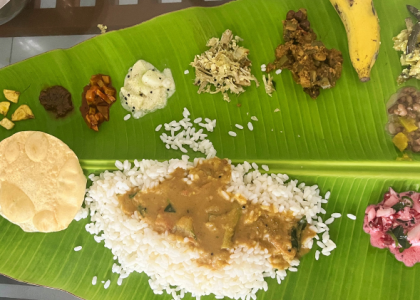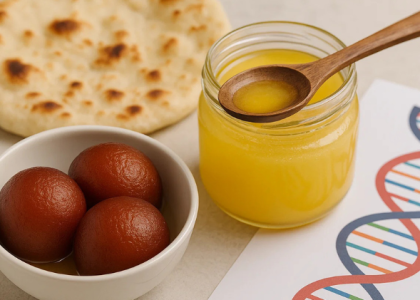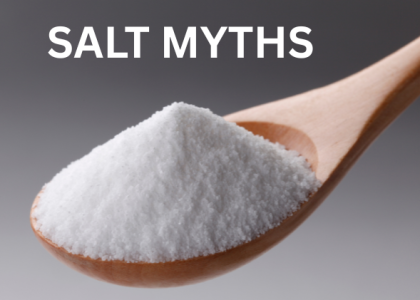When that afternoon hunger strikes, many of us reach for familiar comfort snacks—crispy samosas, deep-fried pakoras, or sweet jalebis. These traditional favorites connect us to home and heritage, but they also deliver a hefty dose of unhealthy fats and refined carbohydrates that can impact our heart health over time. The good news? Our culinary tradition offers plenty of delicious alternatives that satisfy those snack cravings without compromising heart health.
Why South Asians Need Heart-Healthy Snack Options
Before diving into the snack suggestions, let’s understand why this matters especially for our community:
Our Unique Heart Risks
South Asians face specific cardiovascular challenges:
- Higher rates of heart disease at younger ages
- Increased sensitivity to dietary fats and refined carbohydrates
- Greater tendency to develop insulin resistance
- Higher risk of metabolic syndrome even at normal weights
The Snacking Impact
For many South Asians, snacking isn’t just occasional—it’s woven into our social fabric:
- Chai time treats are daily rituals
- Gathering with family means endless snack platters
- Office break rooms feature shared Indian snacks
- Religious and cultural celebrations center around special treats
Principles of Heart-Healthy Indian Snacking
Creating heart-healthy versions of favorite snacks means understanding a few key principles:
Lower Oil Content
- Focus on steaming, baking, roasting, or air-frying instead of deep-frying
- Use minimal oil when cooking (measured tablespoons rather than free pouring)
- Choose heart-healthy oils like mustard oil or olive oil when possible
Balance Your Ingredients
- Include protein in snacks to slow digestion and prevent blood sugar spikes
- Add fiber from vegetables, whole grains, or legumes
- Incorporate healthy fats from nuts, seeds, or avocados
Mindful Spicing
- Use traditional spices generously (many have anti-inflammatory benefits)
- Reduce salt while amplifying other flavors
- Use natural sweeteners in smaller amounts
Savory Heart-Healthy Indian Snacks
Let’s explore delicious savory options that honor tradition while protecting your heart:
1. Roasted Chana (Chickpeas) with Modern Twists
Traditional Benefit: Chickpeas have been a staple protein source for centuries Heart-Healthy Profile: High in fiber, protein, and complex carbohydrates
Simple Preparation:
- Drain and dry canned chickpeas
- Toss with minimal oil and spices (cumin, coriander, chili, amchur)
- Roast until crispy (oven or air-fryer)
Modern Variations:
- Chaat masala and lime zest
- Tandoori spice blend
- Curry leaf and mustard seed
- Garlic and herb
2. Makhana (Fox Nuts/Lotus Seeds)
Traditional Benefit: Used in Ayurvedic practice for centuries Heart-Healthy Profile: Naturally low in sodium, good source of magnesium and potassium
Simple Preparation:
- Dry roast in a pan until crispy
- Add a teaspoon of ghee or olive oil at the end
- Season with your choice of spices
Flavorful Variations:
- Pudina (mint) and black pepper
- Turmeric and black salt
- Chili-lime
- Jaggery-cinnamon for a sweet-savory mix
3. Ragi (Finger Millet) Munchies
Traditional Benefit: Millet grains have been part of Indian agriculture for millennia Heart-Healthy Profile: High in calcium, fiber, and low glycemic index
Simple Preparation:
- Mix ragi flour with vegetable puree (spinach, carrot, or beetroot)
- Add spices, minimal oil, and water to form a dough
- Roll thin and bake into crackers, or form small balls for ragi bites
Regional Variations:
- South Indian style with curry leaves and mustard seeds
- North Indian style with ajwain (carom) and cumin
- Fusion style with Italian herbs and a hint of parmesan
4. Sprout Chaat
Traditional Benefit: Sprouting has been practiced traditionally to enhance nutrition Heart-Healthy Profile: Sprouting increases protein availability and reduces carbohydrate content
Simple Preparation:
- Mix sprouted moong beans with finely chopped tomatoes, onions, and cucumber
- Add fresh herbs (cilantro, mint)
- Season with chaat masala, cumin powder, and lemon juice
Creative Additions:
- Pomegranate seeds for antioxidants
- Roasted flaxseeds for omega-3 fatty acids
- Diced avocado for healthy fats
- Baked sweet potato cubes for complex carbs
5. Baked Vegetable Cutlets
Traditional Benefit: Adapts the beloved street food in a healthier format Heart-Healthy Profile: Vegetables provide fiber, antioxidants, and micronutrients
Simple Preparation:
- Mix grated or finely chopped vegetables (carrots, beans, peas, potatoes)
- Add binding ingredients (oats or whole grain breadcrumbs)
- Shape into patties and bake or air-fry with minimal oil spray
Binding Options:
- Mashed chickpeas for extra protein
- Roasted and ground flaxseeds
- Oats and grated apple for moisture
- Mashed sweet potato
Sweet Heart-Healthy Indian Snacks
Satisfying a sweet tooth doesn’t have to harm your heart:
1. Ragi and Nut Energy Ladoos
Traditional Benefit: Combines the tradition of ladoos with nutritious ingredients Heart-Healthy Profile: Contains healthy fats, protein, and slow-releasing carbohydrates
Simple Preparation:
- Roast ragi flour until fragrant
- Mix with chopped nuts, seeds, and a small amount of jaggery
- Add enough ghee or coconut oil to bind (much less than traditional recipes)
- Form into small balls
Nutrient Boosters:
- Add chia seeds for omega-3 fatty acids
- Include dark chocolate chips for antioxidants
- Mix in dried berries for additional vitamins
- Use a touch of cardamom for flavor without extra sweetener
2. Yogurt Fruit Chaat
Traditional Benefit: Adapts the chaat concept to a sweeter, heart-healthier version Heart-Healthy Profile: Probiotics from yogurt, fiber and antioxidants from fruits
Simple Preparation:
- Choose thick Greek yogurt or hung curd
- Add diced seasonal fruits (apples, pears, berries, or tropical fruits)
- Season with roasted cumin, a pinch of black salt, and minimal honey if needed
Creative Touches:
- Top with a sprinkle of crushed nuts
- Add fresh mint leaves
- Include a dash of chaat masala for the traditional sweet-salty-tangy balance
- Layer in a glass for a parfait effect
3. Baked Apple or Pear Halwa
Traditional Benefit: Transforms the beloved halwa into a fruit-based treat Heart-Healthy Profile: Uses natural fruit sugars and fiber
Simple Preparation:
- Grate apples or pears with skin on for fiber
- Cook with minimal ghee, cardamom, and other warming spices
- Add a small amount of jaggery or dates for sweetness
- Garnish with sliced almonds
Technique Tips:
- Allow the fruit to release its own juices before adding any sweetener
- Cook slowly to naturally caramelize the fruit sugars
- Use a non-stick pan to reduce the need for fats
4. Date and Nut Rolls
Traditional Benefit: Inspired by traditional dry fruit treats served at celebrations Heart-Healthy Profile: Natural sweetness from dates, protein and healthy fats from nuts
Simple Preparation:
- Pulse soft dates in a food processor
- Mix with chopped nuts and seeds
- Add warming spices like cardamom, cinnamon, or saffron
- Roll into bite-sized pieces and coat with desiccated coconut or poppy seeds
Variations:
- Rose water and pistachio for a Mughlai-inspired flavor
- Orange zest and almonds
- Cocoa powder and walnuts for a chocolate-like treat
- Ginger and cashews for a warming combination
Healthy Beverages to Pair with Snacks
Complete your heart-healthy snacking with these drink options:
1. Spiced Herbal Teas
Traditional Benefit: Draws on Ayurvedic tea traditions Heart-Healthy Profile: Anti-inflammatory properties, zero calories when unsweetened
Popular Combinations:
- Tulsi (holy basil) with lemon
- Ginger, cinnamon, and a touch of honey
- Mint and rose petals
- Turmeric milk with minimal jaggery (golden milk)
2. Lassi Variations
Traditional Benefit: Transforms the beloved yogurt drink Heart-Healthy Profile: Probiotics with reduced sugar
Lighter Options:
- Spiced chaas (buttermilk) with cumin and mint
- Fruit-based lassi using whole berries instead of sugar
- Vegetable lassi with cucumber and mint
- Diluted yogurt with roasted cumin and herbs
Practical Tips for Heart-Healthy Snacking
Making these healthier choices easier in daily life:
Batch Preparation
- Prepare dry snacks like roasted chana or makhana once weekly
- Store in portion-controlled containers
- Keep cut vegetables ready in the refrigerator
Social Situations
- Bring a healthy option to share at gatherings
- Eat a small portion of special treats on occasions
- Fill up on healthier options before tempting situations
Gradual Transitions
- Modify favorite recipes incrementally
- Reduce oil amounts gradually
- Slowly adjust to less sweetness over time
Success Stories: Real South Asians Who Made the Switch
These community members transformed their snacking habits with remarkable results:
Deepa, a 42-year-old mother from Kerala, switched from deep-fried banana chips to air-fried versions and saw her triglycerides drop significantly within three months.
Arjun, a 35-year-old IT professional, replaced his daily office samosas with sprouted moong chaat. After six months, his waist circumference reduced by three inches without any other dietary changes.
Priya’s family transformed their evening snack ritual, replacing fried mixtures with roasted makhana and baked vegetable chips. Her children now prefer these options and her husband’s blood pressure has normalized.
The Heart of the Matter
Enjoying delicious Indian snacks doesn’t have to come with a side of heart risk. By making thoughtful adaptations to traditional favorites, you can honor culinary heritage while protecting your heart health. These snacks aren’t about deprivation—they’re about discovering the incredible variety and flavor that our cuisine offers in its healthiest forms.
The next time you’re reaching for an afternoon pick-me-up, remember that satisfying your craving can also nourish your body. Your heart—and your taste buds—will thank you.
Want more heart-healthy Indian recipe adaptations? Visit SouthAsianHeart.com for more resources tailored to our community’s unique needs and cultural context.




